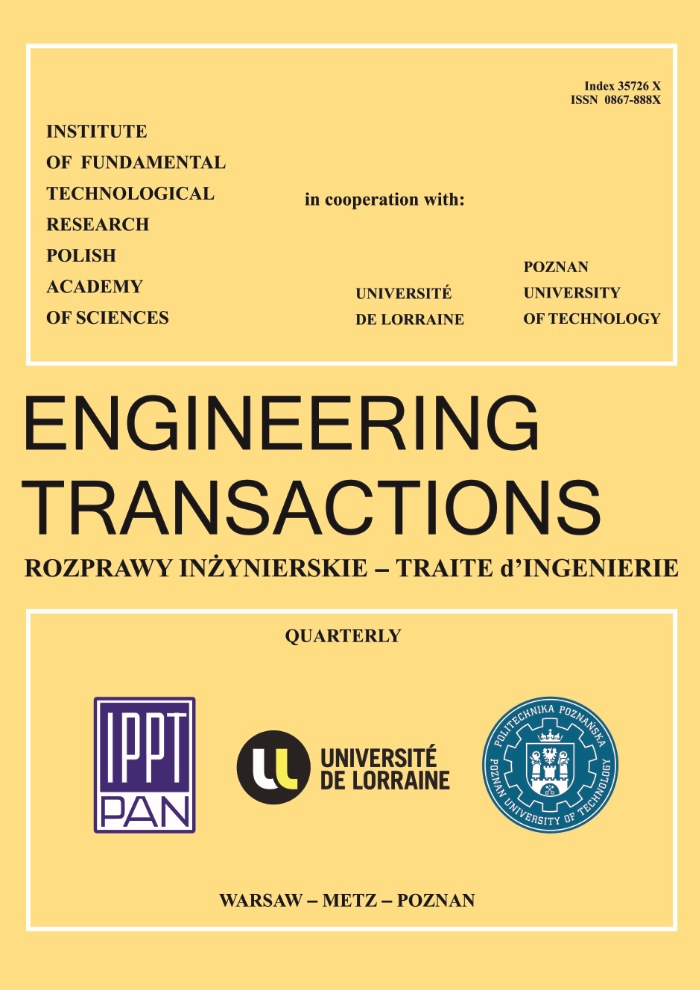Abstract
The author gives a survey of various creep theories used for the computation of structures working at high temperatures.The conditions are analyzed under which steady-state creep takes place.
The notion of quasi-steady-state creep is introduced in which the stresses are unknown and the strain rates are not constant. It is seen that in a number of machine design problems the most simple computation methods lead to sufficiently accurate results and may constitute a basis for strength determination. This statement is illustrated by experimental data from the destruction tests of rotating discs. A computation based on the creep theory enables us to foretell in a comparatively accurate manner the destruction. The author gives some computation methods of discs on the basis of the theory of strain-hardening taking the stress-distribution into consideration, which is particularly important for the analysis of non-steady states. Also the stability problem under the conditions of creep is considered. The stability loss of a compressed bar is analyzed on the basis of the inheritance theory presented previously by the author.
References
[1] [in Russian]
[2] [in Russian]
[3] [in Russian]
[4] [in Russian]
[5] V. VOLTERRA, Fonctions de ligne, Paryz 1913.
[6] [in Russian]
[7] F.H. TURNER, K.E. BLUMQUIST, A Study of the Applicability of Rabotnov's Creep Parameter for Alluminium Alloy, J. Aeronaut. Sci., 12, 23 (1956).
[8] [in Russian]
[9] [in Russian]
[10] F.K.G. ODQUIST, Influence of Primary Creep on Column Buckling, J. appl. Mech., 3, 21(1954).
[11] PAO IOH-HAU, I. MARIN, An Analytical Theory of the Creep Deformation of Materials, J. appl. Mech., 2, 20, (1953).
[12] [in Russian]
[13] [in Russian]
[14] N.I. HOFF, The Necking and the Rupture of Road Subjected to Constant Tensile Loads, J. appl. Mech., 1, 20 (1953).
[15] [in Russian]
[16] [in Russian]
[17] A.E. JOHNSON and N.E. FROST, Note on the Fracture under Complex Stress Creep Conditions of an 0,5% Molybdenum Steel at. 550° and a Commercially Pure Copper at 250° C, NPL, 2, 31 (1954).
[18] [in Russian]
[19] [in Russian]
[20] [in Russian]
[21] [in Russian]
[22] [in Russian]
[23] [in Russian]
[24] [in Russian]
[25] [in Russian]
[26] [in Russian]
[27] [in Russian]
[28] [in Russian]
[29] N.I. HOFF, Creep Buckling, Aeronaut. Quart., 7 (1956).
[30] J. KEMPNER, Creep Bending and Buckling of Non-Linaer Visco-Elastic Columns, NACA TN 3137, January 1954.
[31] [in Russian]
[32] [in Russian]
[33] [in Russian]
[34] G. GERARD, A Creep Buckling Hypothesis, J. Aeronaut. Sci., 9, 23 (1956).
[2] [in Russian]
[3] [in Russian]
[4] [in Russian]
[5] V. VOLTERRA, Fonctions de ligne, Paryz 1913.
[6] [in Russian]
[7] F.H. TURNER, K.E. BLUMQUIST, A Study of the Applicability of Rabotnov's Creep Parameter for Alluminium Alloy, J. Aeronaut. Sci., 12, 23 (1956).
[8] [in Russian]
[9] [in Russian]
[10] F.K.G. ODQUIST, Influence of Primary Creep on Column Buckling, J. appl. Mech., 3, 21(1954).
[11] PAO IOH-HAU, I. MARIN, An Analytical Theory of the Creep Deformation of Materials, J. appl. Mech., 2, 20, (1953).
[12] [in Russian]
[13] [in Russian]
[14] N.I. HOFF, The Necking and the Rupture of Road Subjected to Constant Tensile Loads, J. appl. Mech., 1, 20 (1953).
[15] [in Russian]
[16] [in Russian]
[17] A.E. JOHNSON and N.E. FROST, Note on the Fracture under Complex Stress Creep Conditions of an 0,5% Molybdenum Steel at. 550° and a Commercially Pure Copper at 250° C, NPL, 2, 31 (1954).
[18] [in Russian]
[19] [in Russian]
[20] [in Russian]
[21] [in Russian]
[22] [in Russian]
[23] [in Russian]
[24] [in Russian]
[25] [in Russian]
[26] [in Russian]
[27] [in Russian]
[28] [in Russian]
[29] N.I. HOFF, Creep Buckling, Aeronaut. Quart., 7 (1956).
[30] J. KEMPNER, Creep Bending and Buckling of Non-Linaer Visco-Elastic Columns, NACA TN 3137, January 1954.
[31] [in Russian]
[32] [in Russian]
[33] [in Russian]
[34] G. GERARD, A Creep Buckling Hypothesis, J. Aeronaut. Sci., 9, 23 (1956).


